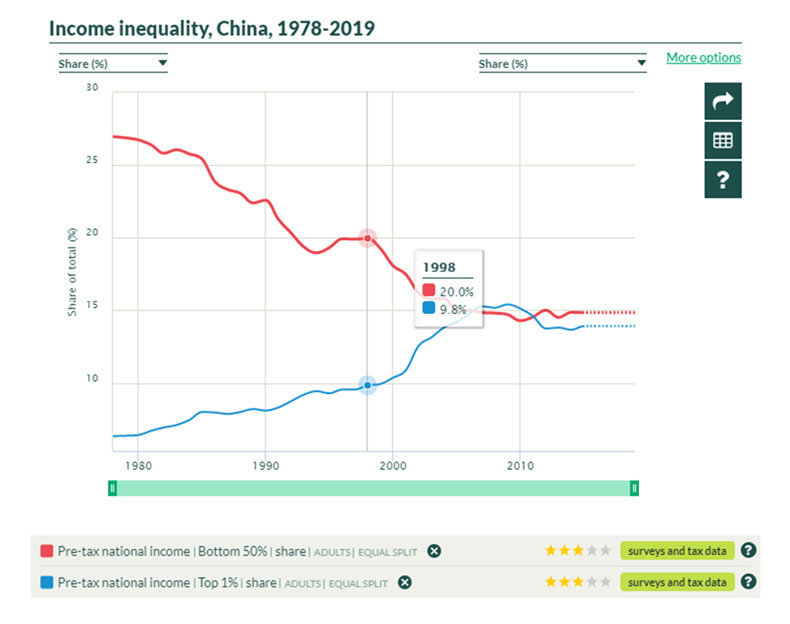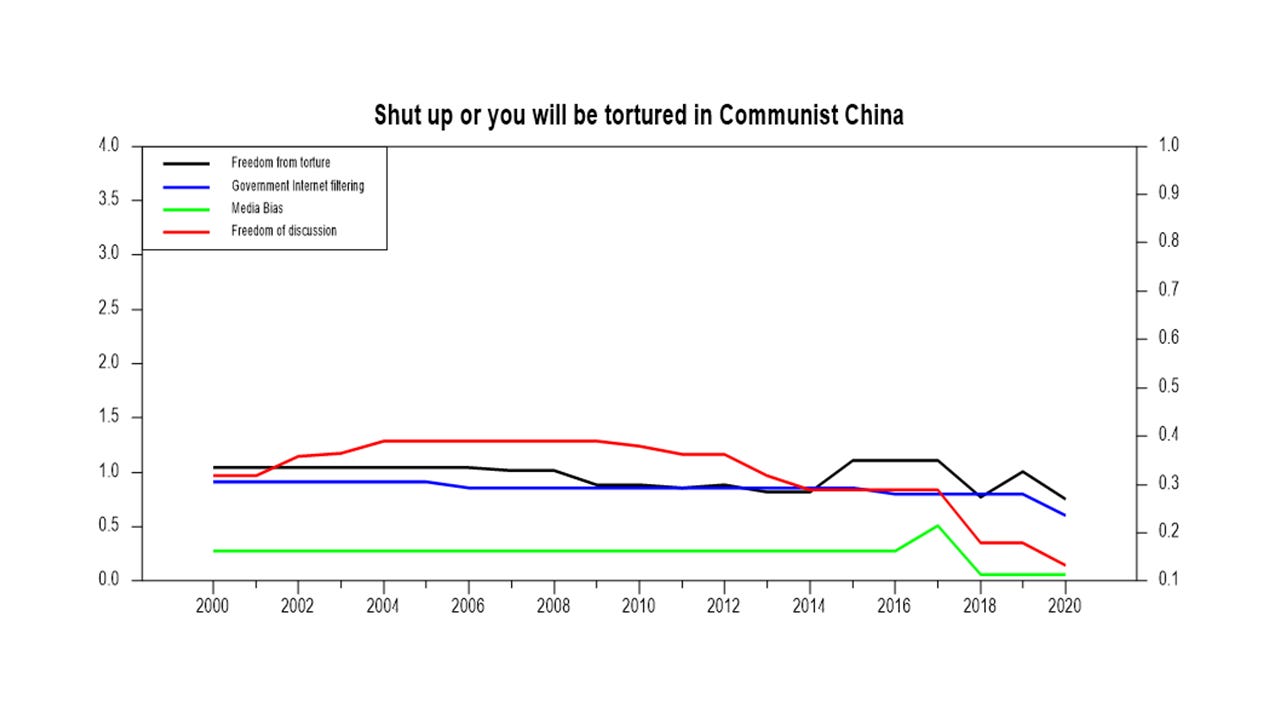Poverty reduction, inequality, and repression in genocidal Communist China.
Spoiler: the hypocritical Communist regime wants us to believe that it has eradicated poverty. We all know that there are enormous gaps in income and wealth in China. Instead of acknowledging this, the communist regime banned Thomas Piketty’s book where the rising inequalities in China are analysed. Piketty was told that the book could only be published in China if the truth about China was censored. Piketty refused of course.
Most ordinary Chinese are not aware of this. The regime controls the access to Internet, monitors social media and clamps down on everyone who dares to discuss this or the genocide of the Uighurs or other matters. Those that get caught fear the risk of being tortured.
The brutal communist regime issued a “White paper” on poverty reduction in the beginning of April. It bragged about its achievements since 1921 (sic!) when the communist party (CCP) was founded. For some reason it wasn’t mentioned that a Chinese had to be member of a very narrow elite of the CCP to escape poverty at the time of mass murderer Mao’s death in 1978.
In the white paper, China offers to share its experiences and expertise with the rest of the world to erase poverty. I haven’t read the full version of the white paper but I’m quite sure that they didn’t mention that the genocide of Uighurs was one of the CCP’s methods to erase poverty. If you force sterilise parts of the population which your policies have kept in poverty, then its birth rates will decline and eventually the population will eradicated too or assimilated in the Han population.
This year, China has decided to not to publish any statistics on population in their annual statistical yearbook. Probably because previous issues showed what was going on in Xinjiang, c.f. Figure 1.
Figure 1. Birth rate changes in China 2017-2019 (%).
Source: Compiled by John Stone () and uploaded on https://github.com/jnzst/china-birth-rates. Note: Original data from different editions of China Statistical Yearbook can be found on the website of Naional Bureau of Statistics China. http://www.stats.gov.cn/tjsj/ndsj/2020/indexeh.htm Different editions are available by changing the year in the link.
And it would be even more dramatic if the graph only showed Uyghur birth rates. Xinjiang birth rates also include the majority population, Han’s, birth rates. Adrian Zenz has dived into Chinese population statistics and shows how the Chinese authorities forced sterilization of Uyghur women was the brutal regime’s response to the decline of the Han population’s share of total population in Xinjiang.
And the communist regime does not want to discuss the increasing income inequality in China. The income share of the top 1% income earners in China has increased from around 2 percent to 14 percent. At the same time has the income share for the half of the population with the lowest incomes dropped from 27 percent to 15%, c.f. Figure 2.
Figure 2. The top 1% has a larger share of total income than half of the population with the lowest incomes.
Source: World Inequality Database, https://wid.world/
And the communist regime definitely does not want to discuss the increasing inequality in wealth. The 1% richest share of the population owns 30 percent of total wealth in China while the poorest part half of the population now only owns 3 percent, c.f. Figure 3.
Figure 3. The top 1%’s share of total wealth is five times larger than the poorest half’s share of total wealth.
Source: World Inequality Database, https://wid.world/
These facts are embarrassing for the regime. So embarrassing that they tried to censor Thomas Piketty’s book “Capital and Ideology” where the Chinese increasing inequality were analysed and the periods of Mao described as a disaster:
“So great was the communist disaster that it overshadowed even the damage done by the ideologies of slavery, colonialism, and racialism and obscured the strong ties between those ideologies and the ideologies of ownership and hypercapitalism – no mean feat,”
Piketty told the Guardian The Chinese publisher Citic Press had sent Piketty’s French publisher a list of requested cuts of the book. Piketty refused of course:
“I refused these conditions and told them that I would only accept a translation with no cut of any sort. They basically wanted to cut almost all parts referring to contemporary China, and in particular to inequality and opacity in China,” he said.
The truth does not have many supporters in the CCP. To suppress the truth, the regime makes sure that the media only reports what the regime wants to say (Media bias), censors the Internet (Government Internet filtering), suppresses the people’s attempt to discuss political issues at home or in public (Freedom of discussion) and tortures those who get caught doing in anyway, c.f. Figure 4.
Figure 4. Freedom from torture, Government filtering of the Internet, Media bias and Freedom of discussion (right axis) in Communist China.
Source: V-Dem, Varieties of Democracy, https://www.v-dem.net/en/ Note: The indicators Freedom from torture, Government Internet filtering and Media Bias range from 0 to 4 where 0 indicates that torture is frequently practised by the authorities, that the Internet is strictly censored and that the media obediently reports what the regimes wants. The indicator Freedom of discussion ranges from 0 to 1 where 0 indicates that people can’t discuss political issues at home or in public without fear of harassment from the authorities.







